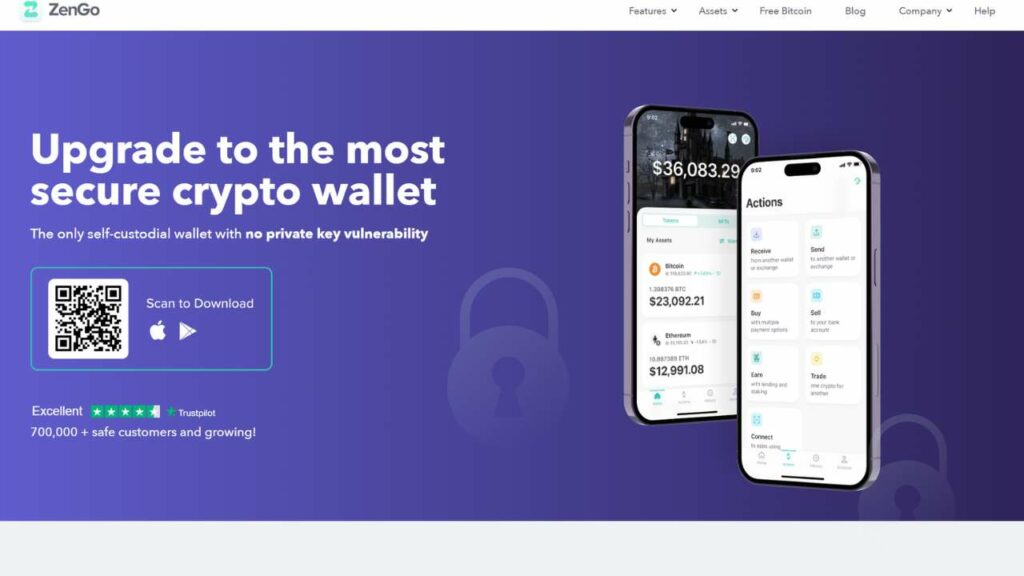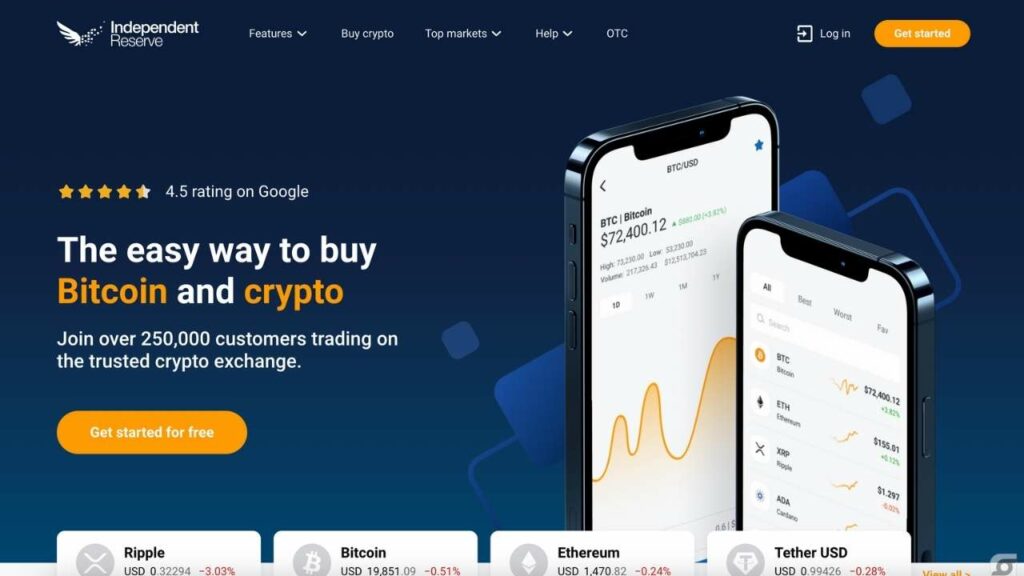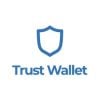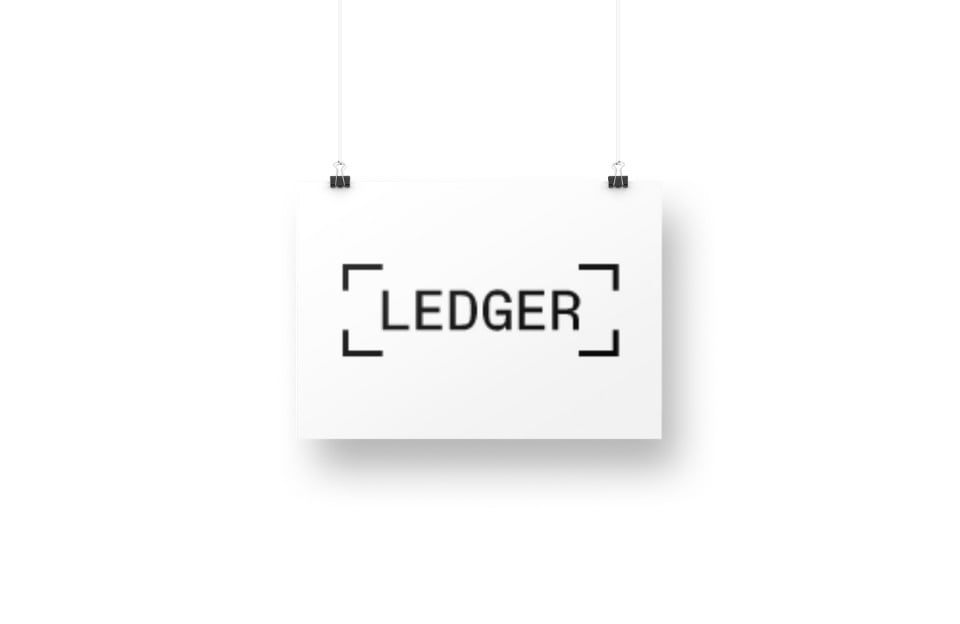Luis Clark
- Home
- /
- Australia & Crypto
- /
- Crypto Wallets Australia
- /
- Which is the Best...
Which is the Best Crypto Wallet Australia 2023?
Luis Clark
Top Australian exchange wallet for Storing 300+ Coins
Promo Code N/A
T&Cs apply
Best Australian Exchange to Store Top Coins
Promo Code N/A
T&Cs apply
Best Crypto Wallet Australia? Our Opinion:
It’s difficult to pinpoint the overall best in all features, no thanks to the diverse needs of Australian investors and the unique offerings of each crypto wallet. However, after careful research and detailed comparison, we discovered Ledger offers the most secure way to store cryptocurrencies. Securing assets and holdings is a top priority for every investor.
Choosing the right crypto wallet is essential to crypto trading and investing. However, finding the best crypto wallets in Australia is more complex. There are many factors to consider, and some wallets offer more services, like staking and impeccable security than others.
With that said, we have narrowed down the top cryptocurrency wallets in Australia and their features to help Aussies make the best choice.
Best Cryptocurrency Wallets in Australia - List
Cryptocurrency wallets are tools or devices for storing users’ assets. Investors need to select the best crypto wallet according to their requirements and important features, such as security, storage, user experience and pricing. Considering these factors, we’ve highlighted these 10 wallets as the best crypto wallets in Australia:
- Ledger Nano S: Overall best crypto wallet in Australia for experienced investors
- Trezor: Best wallet for advanced investors
- Trust Wallet: Best for mobile use
- Exodus Wallet: Best desktop wallets
- Zengo Wallet – Best for NFTs and DeFi Apps
- Atomic Wallet: Best for staking and rewards
- Coinomi: Best for anonymous trading
- Swyftx Wallet: Top Australian cryptocurrency exchange wallet for Storing 300+ Coins
- Independent Reserve Wallet: Best Australian Exchange to Store Top Coins
Ledger Nano S Wallet - Overall Best Crypto Wallet In Australia

- Cryptocurrencies available: 5,500+
- Mobile App: Yes
- Wallet Type: Hardware
- Cost: $79
Ledger is one of the most reputable crypto wallet service providers for Australians. Experts from the cryptocurrency and security industries found the French company in 2014. The company is renowned for its Ledger Nano S Plus and Ledger Nano X hardware crypto wallets.
Nano S Plus is our overall best crypto wallet for Aussies for many reasons. The hardware crypto wallet is designed to store cryptocurrencies and non-fungible tokens (NFTs) offline securely. The wallet is an upgrade on the previous wallets from the company. The two preceding wallets, Ledger Nano S and Ledger Nano X, were criticised for low storage and high selling price, so Ledger built the Nano S Plus to address these concerns.
The Ledger Nano S Plus is an ideal crypto wallet for experienced investors who prefer to secure their assets themselves. Unlike wallets provided by exchanges, users hold the keys to the Nano S Plus wallet and can manage access.
Another reason the Ledger Nano S Plus is commendable is that it’s a more recent addition that addresses the needs of modern cryptocurrency investors and traders. It was released in April 2022 and comes with altcoins and Web3 support, a standout feature amongst crypto wallets today.
Features
Here are the top features of the Nano S Plus:
- Supports up to 100 apps and 5,500+ digital assets, including Bitcoin, Ethereum, Litecoin, XRP, etc.
- Compatible with 50+ wallets
- Supports NFTs, decentralised applications (DApps), multiple assets, and other Web3 applications
- Supports crypto staking
We summarised all the Ledger Wallet key features, but we also made an in-depth Ledger Australia Review page that you can check out.
Security
Regarding the level of security, Ledger is famous for building highly secure products, and the Nano S Plus is another testament. The device is built with top-notch security and is known for no successful hacks.
The Ledger Nano S Plus features include the following:
- Secure Element with CC EAL5+ certification
- Independently certified by the National Agency for Information System Security (ANSSI).
- Military strength security chip.
- BOLOS operating system to prevent potential malware from spreading throughout the device.
- Routine security checks by Ledger’s team of white hat hackers and security experts
- Secure Pin Code
- 24-word recovery phrase known by only the user.
Pros
- Supports a wide range of digital assets
- Integrates with multiple decentralised apps
- ANSSI-certified
- Supports crypto staking
- Easy to set up
- Supports NFT storage
- Large storage capacity
Cons
- The plastic isn’t durable
- Doesn’t work with iOS devices like iPhones and iPads
Cost
The Ledger Nano S Plus costs $79 while the Nano X goes for $149.
Trezor - Best for Pro Investors and Traders

- Cryptocurrencies available: 1,450+
- Mobile App: Yes
- Wallet Type: Hardware
- Cost: $67
Features
The Trezor Model T wallet supports over 1,450 cryptocurrencies across various blockchains and offers NFT storage. It also has a large touchscreen display with full colour. The touch screen makes it much easier for users to enter PINs and review crypto addresses when sending crypto. The wallet also allows direct crypto purchases from exchanges without creating an account.
Top features of the Trezor Model T include;
- Cold storage for maximum security
- Simple touchscreen display
- Compatible with computers and Android mobile devices
- Supports NFT storage
- Allows direct crypto purchase
Features
The hardware wallet comes with top-notch security features, including removing online access to data, making it more difficult to access or compromise them online. Users can also set a 50-digit pin code and perseveres to provide more level of security for their funds. A passphrase is a set of letters, words, phrases, and spaces generated by users when they need to unlock their Trezor hardware wallet.
Other features include:
- Biometric login and password management
- MicroSD card for additional protection
We summarised all the Trezor Wallet key features, but we also made an in-depth Trezor Wallet Australia Review page that you can check out.
Pros
- Secure cold storage
- NFT storage available
- Digital identity and password management for extra security
- Easy to configure and use for asset storage
- Large touchscreen display for more accessibility
- Supports both desktop and Android devices
Cons
- Doesn’t support iOS devices like iPhones and iPad
- The $213 price is high
- Users can lose all their assets if they lose their recovery phrase
- Supports only 1,450+ assets
Cost
The Trezor Model T costs $213, while the Model One goes for $67.
Trust Wallet - Best For Mobile Use

- Cryptocurrencies available: 4.5 million
- Mobile App: Yes
- Wallet Type: Software
- Cost: Free
It is a beginner-friendly cryptocurrency wallet that supports Android and iOS devices. The wallet is one of the best non-custodial wallets for Australians, and over 25 million people use it worldwide. Viktor Radchenko founded Trust Wallet in 2017, intending to offer people a way to buy assets through convenient channels like a bank account or credit card.
Today, the wallet supports over 4.5 million assets across 65 blockchains. The wide range of cryptocurrencies saves users the stress of downloading multiple wallet apps and allows them to access multiple coins and digital tokens quickly.
Features
Trust Wallet allows users to purchase crypto with fiat via third-party platforms like Moonpay, but the exchange charges a 4.5% fee for credit card transactions.
Another standout thing about Trust Wallet is its staking support. Trust Wallet supports 12 coins for staking, including TRON, BNB, Tezos, etc. Users can directly stake any supported coins for rewards via the Trust Wallet app. Staking on Trust Wallet is limited to only twelve coins, but users can earn interest rates as high as 11% APY.
In addition, the wallet has a Web3 browser and a marketplace integrated with decentralised apps. Users can easily connect to various decentralised exchanges (DEXs) or crypto lending platforms with this feature. The wallet also supports popular NFT marketplaces like OpenSea.
To stay true to its mission, Trust Wallet is designed with a simple interface that is user-friendly and easily accessible to all kinds of traders. Beginner investors can easily get accustomed to the app and its features, and experienced traders will find its in-built charts handy for crypto price tracking.
Other features of Trust Wallet include:
- Crypto purchases with credit card
- Asset swapping and trading
- Support for all mobile devices, including iOS
- No KYC or identity verification required
- In-built charts for price monitoring
We summarised all the Trust Wallet key features, but we also made an in-depth Trust Wallet Australia Review page that you can check out.
Security
Trust Wallet is a hot wallet, meaning it’s less secure than hardware wallets. However, the platform adopts various security measures to secure users’ funds and data. The platform conducts periodic audits via a security firm called Stateful.
Other security features on Trust Wallet include
- Pin code scanning
- Biometric scanning for extra security
- Storage of keys in users’ personal computers
- 12-word recovery phrase and three additional backup phrases
Pros
- Compatible with desktop and mobile devices (Android, and iOS)
- Supports over 4.5 million digital assets
- Easy to buy and stake cryptocurrencies
- Allows self-custody of private keys. Keys are not stored on the wallet’s servers
- Allows crypto staking with up to 11% APY
- Supports NFT storage
- No wallet fees
Cons
- Hot wallets are more vulnerable to cyber attacks
- Moonpay 4.5% transaction fee is high
- NFTs are only compatible with the Ethereum network, and Binance Smart Chain
Cost
Trust wallet charges no wallet fees. Users can download the app and create an account without KYC. However, transactions attract blockchain network fees, depending on the crypto network.
Exodus Wallet - Best for Desktop Use

- Cryptocurrencies available: 255+
- Mobile App: Yes
- Wallet Type: Software
- Cost: Free
Exodus is another software wallet that offers users mobile and desktop access. Daniel Castagnoli and JP Richardson created the wallet in 2015 to secure, manage, and digital exchange assets.
The mobile app is built to make it easy for users to store, buy, sell, and trade crypto. But the desktop wallet app does more than just store assets. It allows users to monitor the crypto market and a coin’s price trend to enter profitable trades.
Features
The major selling point of the Exodus wallet is that it supports assets on different blockchains, including Ethereum, Bitcoin, Binance Smart Chain, and Solana. The app also allows users to manage and trade over 255 cryptocurrencies directly from the wallet, a web browser, and desktop and mobile devices.
The platform also supports different payment methods. Users can buy 25+ cryptocurrencies using fiat currencies like USD, EUR, and GBP. Alternatively, users can make crypto purchases with credit/debit cards, bank transfers or Apple Pay on the mobile app.
Exodus has additional features like a portfolio overview that help users oversee their holdings. Adding crypto funds to the portfolio is seamless, using the wallet’s built-in exchange to swap digital assets.
The wallet offers various Web3 and decentralised finance (DeFi) features like crypto staking and betting for users to earn more money. Users can stake crypto assets like Algorand (ALGO) and Cosmos (ATOM) on the app. Interestingly, staking via the exodus app can earn up to 8.36% APY.
Exodus also has a highly commendable customer support team available 24/7 to help beginners who may have challenges navigating the app. According to online reviews, the support team typically responds to customers’ emails within 24 hours.
However, Exodus is also a software wallet, so its desktop, and mobile apps are less secure than hard wallets. That means they are more vulnerable to attacks. The security risk is a major downside, which may cause users to opt for hardware alternatives like Ledger Wallets.
Other features of the Exodus wallet include:
- Integration with multiple wallets, including Trezor wallets
- Portfolio management tools for viewing assets across multiple accounts
- Web3 gallery and marketplace for NFTs on the Ethereum, Solana and other supported networks.
- Supports multiple Web3/ DApps.
We summarised all the Exodus Wallet key features, but we also made an in-depth Exodus Wallet Australia Review page that you can check out.
Security
Though Exodus is a software wallet, the platform gives users reasons to trust its security. On Exodus, users have full control of all their assets and data. The app also provides antimalware and robust firewall protection to prevent cyber attacks. In addition, customers can protect themselves with:
- A password
- 12-word security recovery phrase
- Two-factor authentication (2FA)
- Self Private keys storage
- The integration with Trezor hardware wallets (Trezor One and Trezor Model T) to provide additional protection
Pros
- Supports crypto tokens and assets from different blockchains
- Integrates with hardware wallets
- Supports NFT storage
- No transaction fees
- 24/7 customer support
Cons
- Integrates with a limited number of DApps
- Spreads paid on blockchains can be high depending on the network
- Software wallets are more vulnerable to attacks
Cost
The Exodus wallet is free to download. Users only need to download the app from the iOS App Store and Google Play Store. Users who prefer the desktop wallet can also download the Chrome or Brave browser extensions. However, exchanges connected to the app charge spreads for transactions.
Zengo Wallet - Best for NFTs and DeFi Apps

- Cryptocurrencies available: 13+
- Mobile App: Yes
- Wallet Type: Software
- Cost: Free
Zengo is another mobile crypto wallet for Australians that focuses on helping users control their assets conveniently. Ouriel Ohayon, Tal Be’ery and Omer Shlomovits founded the innovative, multi-chain Web3 wallet in Tel Aviv, Israel, in 2018.
The wallet is renowned for supporting Web3, thousands of DApps, crypto gaming, and NFTs. It provides services to 700,000+ customers across different countries and is compatible with desktop, Android, and iOS devices.
Features
In addition to storing cryptocurrencies, Zengo allows users to trade and swap assets like Bitcoin, Ethereum, and popular altcoins. The wallet also supports crypto staking and lending, with an interest rate of up to 8% APY on stablecoins like USDT, USDC, and TUSD. Users can also get 4% APY on ETH staking and up to 3% on BTC staking.
Zengo replaces private keys with threshold signatures, unlike other wallets that use private keys. With these, the app creates two secret shares stored on the user’s mobile device and the Zengo servers. With this hybrid of custodial and non-custodial features, transactions cannot fail, and users eliminate the risk of losing all their assets if the wallet is missing or hacked.
In addition, ZenGo’s friendly and intuitive interface makes the wallet ideal for beginner investors. The wallet removes many technicalities and complexities from storing cryptocurrency, which makes it stand out from other wallets. However, a major drawback to Zengo is its $50 minimum balance for crypto purchases.
Other notable features of the Zengo wallet include;
- Zengo savings account with earn feature of up to 5% APY
- Educational materials for newbies to learn about crypto trading
- Market analytics and data
- 24/7 customer support
- Free Bitcoin rewards for referrals.
- Coinmama and MoonPay integrations to buy and sell crypto.
We summarised all the Zengo Wallet key features, but we also made an in-depth Zengo Wallet Australia Review page that you can check out.
Security
As stated earlier, Zengo deploys multi-party threshold signatures to protect customers in case of hacks and asset loss. The wallet also has no access to customers’ funds.
Other features include:
- 3-factor authentication via email, face scan, and recovery file
- 3D biometric facial recognition encryption software as a failsafe
MPC-based cryptography to reduce risks.
Pros
- Smooth and straightforward user experience
- App is completely free for users
- 3-FA feature for better security
- Eliminates crypto loss due to missing private keys
- Crypto staking and lending available
Cons
- Doesn’t support the Binance Smart Chain (BSC)
- Some assets are restricted in certain locations
- Wallet requires $50 minimum balance
Cost
The Zengo app is free to download on desktop, Android, and iOS devices. But the wallet charges a 0.1% fee on stablecoin purchases. Spreads and network fees are also paid to the coin’s network operators. However, it’s important to note that Zengo has a $50 minimum balance requirement.
Atomic Wallet - Best For Staking and Rewards

- Cryptocurrencies available: 300+
- Mobile App: Yes
- Wallet Type: Software
- Cost: Free
Investors looking to stake assets for high rewards will fancy Atomic Wallet. The platform’s standout feature is its staking support for different coins. Apart from managing and exchanging Bitcoin, Ethereum, XRP, and other 300+ crypto coins and tokens, Atomic rewards stakers with interest rates as high as 20% APY.
Atomic was created by Konstantin Gladych in 2017 and is notable for its decentralised exchange, Atomic Swap, which allows users to exchange cryptocurrencies across different blockchains.
Features
The Atomic wallet supports crypto purchases via debit and credit cards, meaning Atomic Wallet users can purchase any crypto of their choice without registering on a centralised exchange.
In addition, the Atomic wallet is free, so that users can get access with no payment barrier. Simply put, users can buy coins without pre-owning them, which offers more simplicity. They can also seamlessly swap any coin or token.
The cryptocurrency wallet supports the storage of over 435 popular crypto assets.
Like many other cryptocurrency wallets in Australia, Atomic Wallet supports NFT storage, making it ideal for Web3 enthusiasts.
Other outstanding features of the Atomic Wallet are;
- Support multiple operating systems, including Windows, Linux, MacOS, etc.
- Mobile app support on iOS and Android
- Portfolio management
- 1% cashback from swapping 60+ crypto pairs
- Supports 435+ coins
Security
- Wallet security with AES and TLS encryptions
- Password and 12-word backup phrase for users
Pros
- Supports NFT storage
- Crypto staking and rewards available
- Secure encryption for private keys
- No rigorous KYC process
- Compatible with desktop, Android, and iOS devices
Cons
- Limited to just 300+ digital assets
- No hardware wallet support, making the wallet vulnerable
Cost
The Atomic Wallet is free to use for all traders. However, depending on the selected coin, the network charges users transaction fees.
Coinomi - Best for Anonymous Trading

- Cryptocurrencies available: 1,770+
- Mobile App: Yes
- Wallet Type: Software
- Cost: Free
Coinomi is the oldest crypto asset wallet around. George Kimionis created the wallet in 2014. The platform is currently trusted by millions of people who use it to store, manage, and exchange Bitcoin and over 1,770 other crypto assets across 125+ blockchains.
The non-custodial wallet also supports NFTs and crypto purchases via card payments. However, the crypto purchase is processed by a partner called Simplex, and the platform charges a transaction fee between 3.5% – 5%.
Features
Coinomi offers a completely anonymous service with no KYC, IP monitoring, or transaction records policies. This feature is ideal for users who want to keep their crypto investments private.
Another major perk of Coinomi is its support for multiple languages. The wallet offers its services primarily in English but also supports Russian and Chinese Mandarin. This feature allows Coinomi to extend its connection to existing users and attract more new users worldwide.
Other notable features on Coinomi include;
- 24/7 customer support
- Integration with DEXs for crypto purchases
- SegWit support for Bitcoin and Litecoin transactions to reduce fees
- Multiple fiat currency options
- Mobile support on Android and iOS
Security
Coinomi has been around since 2014, and the wallet provider deploys different tactics to secure users’ funds and information. Wallet keys are private, and an AES key encrypts users’ seed phrases. Although the wallet reportedly had a security issue in 2019, no user fund has been missing, and the wallet has gained more popularity since then.
Other features include
- Complete privacy and anonymity for users
- Digital ID login for an extra layer of security
- Two-factor authentication (2FA)
Pros
- Completely anonymous usage and transactions
- Supports a wide range of cryptocurrencies
- Crypto and NFT storage available
- Built-in exchanges for easy access
- 24/7 support
Cons
- Not suitable for beginners
- No cold asset storage
- No staking options
Cost
The Coinomi wallet is free to use. It also charges zero fees for incoming and outgoing transactions. However, outgoing transactions attract a mining fee that goes to coin miners and not Coinomi. The fees depend on the coin’s network at the transaction time.
Swyftx Wallet - Top Australian Exchange Wallet for Storing 300+ Coins

- Cryptocurrencies available: 320+
- Mobile App: Yes
- Wallet Type: Software
- Cost: Free
Swyftx wallet allows Australian users to store their cryptocurrency when they make a purchase on the platform. Swyftx requires users to be online to initiate transactions and view their crypto balances. This can be convenient for Australian investors looking to trade the crypto market regularly.
The Swyftx crypto exchanges support the trading of over 320 crypto assets, meaning users can directly send, receive, and store their coins on the platform. Swyftx wallet also has a multi-currency support system in place to enable investors to store their crypto assets safely.
The platform is intuitive and easy to use. Unlike several other Australian exchanges, Swyftx offers a demo account, allowing beginners to trade with virtual funds. Another unique feature is the Swyftx staking that allows Australian crypto investors to earn passive income from their idle cryptocurrencies.
Features
Here are the top features of Swyftx Wallet:
- Top AUSTRAC-registered Australian exchange
- Offers storage of 320+ coins
- Offers staking
- Features a demo account
Security
Swyftx takes the security of its crypto wallets seriously. The web wallet offers two-factor authentication (2FA), JWT tokens and breached password checks on other websites.
Other security features include:
- Consulting with third-party security auditors
- Expire inactive sessions
- Regular external penetration testing
- Frequent internal security audits
Pros
- Multi-currency support
- Direct storing of crypto assets on the exchange
- Elaborate security protocols, including 2FA and external penetration testing
- Exchange wallet enables seamless trading of digital coins
- Free storage support
Cons
- Hot wallets are often targeted by malicious actors
- No standalone wallet app
Independent Reserve Wallet - Best Australian Crypto Wallet to Store Top Coins

- Cryptocurrencies available: 30+
- Mobile App: Yes
- Wallet Type: Software
- Cost: Free
Rounding up our list of best crypto wallets in Australia is the Independence Reserve Wallet. This best Bitcoin wallet in Australia is from the stable of the Independence Reserve exchange, another top Australian crypto trading platform. Like Swyftx, Independence Reserve is an exchange wallet that stores all coins on its platform.
The hot wallet can receive, store, send, buy, sell and trade over 30 top-ranking digital assets. This includes popular names like Bitcoin, Ethereum, and Cardano and little-known ones such as ZRX. The platform’s healthy support of assets may need to be better suited for high-volume Australian crypto investors. Still, it would suit novice users perfectly because of its mixed library of popular options.
Features
Here are Independence Reserve’s Top Features:
- Regulated Australian exchange
- Supports storage of 30+ crypto assets
- Free
- 2FA and address whitelisting security measures
Security
Independence Reserve secures users’ assets using 2FA account protection, address whitelisting and browser whitelisting, amongst others.
Pros
- Supports 30+ popular assets
- Offers top-notch security measures including 2FA, address whitelisting, and others
- Free
- Ideal for daily crypto users
Cons
- Users do not have full control of their coins
- No wallet app
Wallets Comparison Table
Below, we compare all our best crypto wallets in Australia on the following metrics – the amount of asset support, additional features like NFTs, app integrations, wallet type, does it support staking and cost.
| WALLET | SUPPORTED COINS | WALLET TYPE | NFT SUPPORT | APP INTEGRATIONS | STAKING SUPPORT | COST |
|---|---|---|---|---|---|---|
| Ledger | 5,500+ | Hardware | Yes | 100+ | Yes | $79 |
| Trezor | 1,450+ | Hardware | Yes | None | No | $67 |
| Trust Wallet | 4.5 million | Software | Yes | Not stated | Yes | Free |
| Exodus Wallet | 255+ | Software | Yes | Not Stated | Yes | Free |
| Zengo Wallet | 13+ | Software | No | Not Stated | Yes | Free |
| Atomic Wallet | 300+ | Software | Yes | Not Stated | Yes | Free |
| Coinomi | 1,770+ | Software | No | No | No | Free |
| Swyftx | 320+ | Software | No | None | No | Free |
| Independence Reserve | 30+ | Software | No | None | No | Free |
What is a Crypto Wallet?

A cryptocurrency wallet is a storage facility. It is also a digital wallet meant to safeguard users’ assets and pass keys from being stolen or lost. These pass keys are split into two, namely public keys and private keys.
A public key is tasked with forwarding and receiving transactions like a traditional bank account number. The private key is used to sign these transactions and works like a card, bank personal identification number, or PIN. While they differ in their responsibilities, public keys and private keys are needed for the smooth operation of a cryptocurrency wallet. Also, they are both randomly generated and usually come in alphanumeric formats.
Aside from storing and confirming transactions on these virtual wallets, crypto wallets also feature clean user interfaces that enable users to check their crypto balances. Cryptocurrencies are bits of data resident on the blockchain. These bits of data are scattered on the blockchain network, and the crypto wallet gathers all the data linked to a user’s wallet address and presents it as their balance in the underlying asset.
Meanwhile, a few also integrate direct purchases and sales of different cryptocurrencies on the wallet and allow users to interact with decentralised applications (dApps).
It is crucial to note that crypto wallets do not directly store cryptocurrencies but pass keys. Instead, the crypto wallet shows the Bitcoin balance in a wallet address and stores the private keys allowing users to execute transactions.
Since crypto assets are virtual and cannot be physically handled, it is important to safeguard them from online theft. The methods of safeguarding crypto assets largely depend on the user’s unique needs and personality. For instance, large-volume owners of cryptocurrencies may prefer using an extremely secure crypto wallet option like cold wallet storage. However, if the said user is a frequent trader, a crypto exchange or software wallet may suit their needs.
In all, users should select the option that suits them best.
How Does It Work?
As we mentioned above, cryptocurrencies are data stored on the blockchain. These data are then linked to specific wallet addresses to show their balances. In addition, crypto wallets allow users to send and receive cryptocurrencies from other Bitcoin wallet addresses through public and private keys. The recipient needs the public key to receive the transferred assets and know the wallet that sends the coin. Meanwhile, the private key is used in signing the transaction from the sender.
Once the transaction has been initiated, the blockchain miners or validators verify the integrity of the transaction on the parameters of if the sending wallet addresses hold the stipulated amount, if it is not double spending, and if it properly references the previous transactions. When the transaction checks all these boxes, it is added to the blockchain.
Although the process can be daunting for novices, crypto wallet transactions are similar to initiating an online bank transaction. The confirmation time is largely determined by the mechanisms employed by each blockchain and can differ from as little as seconds to an hour.
How To Send and Receive Coins
Sending and receiving coins is quite easy on a crypto wallet. Users need only open the crypto wallet and click on either ‘Send’ or ‘Receive’ depending on their present needs.
To send coins
- Open the crypto wallet and click on ‘Send.’
- Paste the recipient’s wallet address in the ‘To’ or ‘Recipient Wallet Address’ section.
- insert the asset
- Select the host network and input the amount
- Confirm the transaction
To receive
- Open the crypto wallet and click on ‘Receive.’
- Tap the asset
- Select the ‘Receive’ icon
- Select the host network
- Copy and forward the generated wallet address to the sender.
Type of Crypto Wallets
Crypto wallets come in different flavours and are targeted at different user needs. Below, we explore some popular crypto wallets according to user strata.
Hot or Software Wallet
The hot wallet is the most popular, also known as a software wallet, which usually comes as a desktop and mobile wallet. The desktop wallet is an application downloaded into a user’s PC, while the mobile option works with Android and iOS devices.
Another growing category is an exchange wallet. This wallet type is connected to the exchange once a user purchases a cryptocurrency. Web or browser wallets are also software-based, but they are connected to the underlying network, not the cryptocurrency exchange itself. A typical example is the Metamask wallet that caters to the Ethereum network.
A hot wallet requires users to be constantly connected to the internet to display balances, send funds, and perform other functions, hence the term ‘hot.’ Given this feature, hot wallets are not considered extremely secure as other crypto wallet types.
Meanwhile, hot wallets are ideal for users who often trade or use their cryptocurrencies for daily online transactions, making them more convenient for the everyday crypto user. Also, all hot wallets are usually free.
Cold Wallet or Offline Wallet
The cold wallet storage, nicknamed offline or hardware crypto wallet, offering users a tactile experience. They are physical devices and look like USB sticks. They are usually connected to a PC through a USB port or Bluetooth. Users need to transfer funds into the hot wallet to make transactions.
Due to their offline nature, hardware wallets do not need to be connected to the internet as they are removed from the PC once a transaction is done. They only store the private keys of the user’s wallet address and sign transactions. Like software wallets, offline crypto storage facilities also show the crypto balances of users.
Offline wallets are ideal for users who infrequently trade digital assets or spend them or who want to HODL for the longer term. Hardware wallets are considered more secure because they do not need to be connected to the internet.
However, they are neither cheap nor free. Depending on the user’s region, hardware wallets cost anywhere between $100 to $250.
Paper Wallet
The Paper wallet is the oldest method of storing crypto assets and usually entails the user printing out the private keys. New paper wallets now feature QR codes of the public keys so others can easily scan them to transfer digital currencies to the wallet address.
Paper wallets are also secure as they do not necessarily need the internet to operate. However, they can easily be damaged through fire or water or outright misplaced. Also, they need to show the user their current crypto balance, making them especially inconvenient for frequent use.
Meanwhile, paper wallets can be a good option for users who can safely store them in safety deposit boxes as they allow crypto owners to retain full control of their coins.
How to Use Your Wallet
As we pointed out earlier, using a crypto wallet is as easy as transferring funds from one bank account to another. Below, we explore how to use the Ledger hardware wallet to send and receive assets:
Download Ledger Live
Ledger is a hardware wallet manufacturer, meaning users must purchase the crypto wallet. The cold storage costs $149 for its Nano X option but less for its S series. After the purchase, download the Ledger Live app, which serves as the software companion for the extremely secure hardware wallet. The Ledger Live app allows users to manage their assets, view their balances in real-time, and set up their hardware devices.
The software is available on both Android and iOS devices, as well as a desktop application. Download and install the Ledger Live application to proceed with the setup.
Connect the Nano To Your PC
Once the application is installed, follow the on-screen prompts and select the ‘First Time Doing This’ icon. Then proceed to connect the Nano S hardware to the lightning cable that came with the box.
Synchronise Your Device to the PC
The next step is to synchronise the extremely secure hardware wallet to the PC. Assuming this is the first time, tap the button on the side of the cold wallet, and scroll through the navigation instructions to the ‘Set up As a New Device’ option. Then hold both buttons simultaneously to select this option.
Then, proceed to the ‘Enter PIN’ icon and use both buttons to select a four-digit number. Hold both together to confirm the numbers. Execute the process once more to confirm the new PIN.
Generate 24-word Recovery Phrase
For situations where the user may forget their PIN, it is important to set a recovery phrase to unlock their secure hardware wallet. The Ledger Nano S allows users to do this all on the device.
Click on the top right button on the device and read through the instructions. Then hold both buttons to generate the 24-word recovery phrase. We recommend that users jot down randomly generated words using the Nano hardware recovery sheet.
Verify each word according to their arrangement order and hold both buttons to confirm each. Simultaneously press both buttons again to finish this process. Follow the on-screen prompts to conclude the setup process.
Receive Crypto
To receive crypto into the Ledger hardware wallet, head to the external platform or wallet and click on the ‘Send’ button. Then open the Ledger Live app and tap on the ‘Receive’ button. Select the crypto asset to receive and tap on ‘Continue.’ The proprietary software requires a connection of the hardware wallet to the PC.
Insert the four or more-digit pin, and the software will automatically display the wallet address to transfer the crypto. Copy it and paste it into the external wallet. Follow the on-screen prompts to conclude the transaction.
Send Crypto
Sending is quite similar to receiving crypto. Open the Ledger Live app on the PC and tap the ‘Send’ icon. Plug the Nano hardware device in when prompted and select the crypto asset to transfer. Then insert the amount and PIN, and confirm the transfer.
Option 2:
Using a crypto wallet largely depends on which kind a user selects. The process is unique for each type. However, we will concentrate on the software wallet in this demonstration:
Download App
The first step is to download the crypto wallet. Depending on the smartphone maker, this can be either the Apple App Store or Google Play Store. Install the software and open it to continue the process.
Note Down Recovery Phrase (setup pin as well)
To set up:
- Click on the ‘Secret Recovery Phrase’ icon and choose between 12 or 24-word secret recovery phrases.
- Note down the recovery phrase, as the next step will quiz you on their word arrangements.
- Insert all the words in their proper place and click on ‘Confirm’ to proceed.
Tap on Applicable Icons (send/receive)
To send crypto:
- Click on the ‘Send’ button.
- Select the underlying asset to send, the amount, and the recipient’s wallet address.
- Fix these details and click on ‘Confirm’ to execute the transaction.
To receive crypto from a friend or colleague, open the crypto wallet and click on the ‘Receive’ button of the asset. Then click on the copy button and forward it to the sender. The network will send the asset once it confirms its validity.
How to Choose the Right Wallet?
With so many options in the crypto market, crypto novices may need more support about which crypto wallet is the best for them. Well, the answer solely lies with the user. A hot or online wallet like Metamask might be a great option if a user intends to trade frequently in the crypto sphere. A software wallet or online wallet is also ideal for those users who spend cryptocurrencies regularly.
However, investors who intend to hold their crypto for a long period should consider using a hardware wallet like Ledger Nano S or X.
Another key factor to consider is security. The wallet’s security, portability and the number of crypto assets they support. Some crypto wallets support a limited quantity of digital assets because of the underlying blockchain they integrate with. Also, only using a crypto wallet from a wallet provider with a top-notch security track record should be considered. By this, we mean don’t use a wallet provider that has suffered a hacking incident.
Final Thoughts
Crypto wallets are the best way of securing digital fortunes. However, selecting the best crypto wallets in Australia can be a chore for beginners. In this best crypto wallet Australia review, we have identified six of the top choices amongst crypto users.
Given the growing prevalence of platform hacks, we recommend using the best hardware wallet like Ledger Nano S or its more premium offering; Nano X. Hardware wallets are more secure since they don’t constantly interact with the internet. Also, crypto owners retain full control of their digital fortunes against a cryptocurrency exchange taking custody of them.
FAQ
Most frequent questions and answers
Software wallets are easily the best for crypto novices. They are quite user-friendly and intuitive and show real-time balances of users’ cryptocurrencies. However, their main attraction is that anyone with basic computer skills can interface with them.
The answer largely depends on what the user’s current needs are. It’s best to use a hardware wallet for a large crypto haul.
As many as possible, however, the chances of forgetting PINs and recovery phrases of passwords increase when users have too many crypto wallets.
Two of the most proven hardware wallets are Ledger and Trezor wallets. They provide top-notch security processes to secure users’ funds from online theft.
Storing crypto on an exchange is quite unsafe. The platform can easily suffer a liquidity crunch and stop withdrawals, or hackers steal users’ crypto funds.
The best hardware wallets are secure and cannot be hacked, except a malicious actor gains access to the PIN code and the recovery phrase.
If the crypto hardware wallet breaks, the crypto assets are still safe because the keys are stored on the blockchain, not on the hardware device. All the user needs to do is request another one and insert the previous wallet’s recovery phrase.
No. Mobile wallets are less secure than hardware wallets. Since mobile wallets are always online, malware can easily breach them.
Features
Skrumble.com provides all its content for informational purposes only, and this should not be taken as financial advice to buy, trade, or sell any investment instruments or products, including but not limited to cryptocurrencies, or use any specific exchange. Please do not use this website as investment advice, financial advice, or legal advice, and each individual’s needs may vary from that of the author. Investing in financial instruments, including cryptocurrencies, carries a high risk and is not suitable for all investors. It is possible to lose the entire initial investment, so do not invest what you cannot afford to lose. We strongly advise conducting your own research before making any investment decisions. This post includes affiliate links with our partners who may compensate us.
To view our privacy policy read here.















